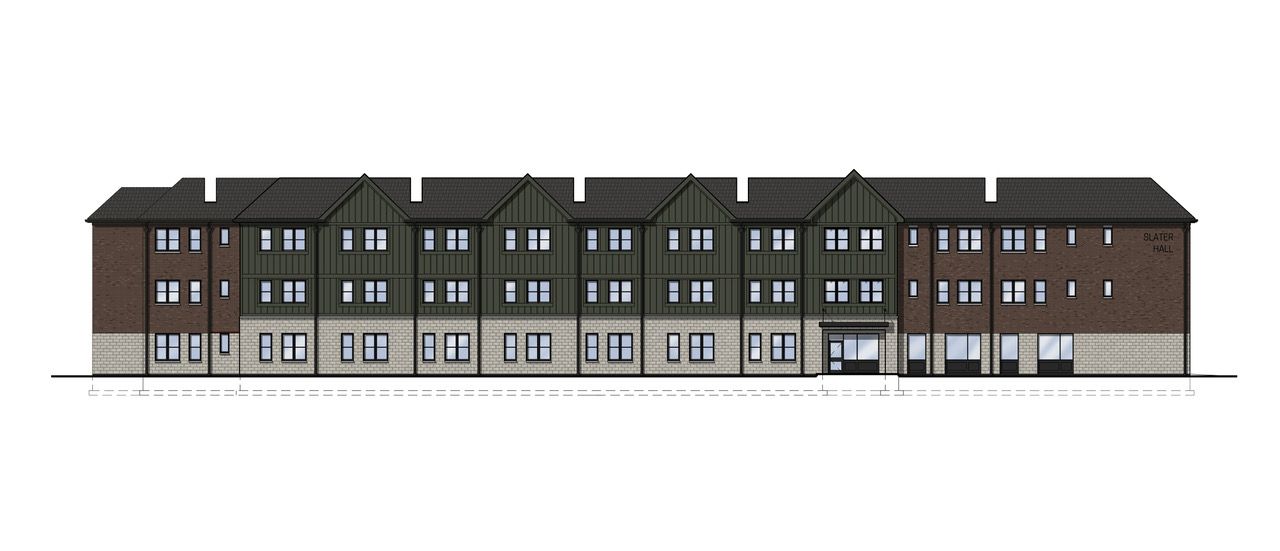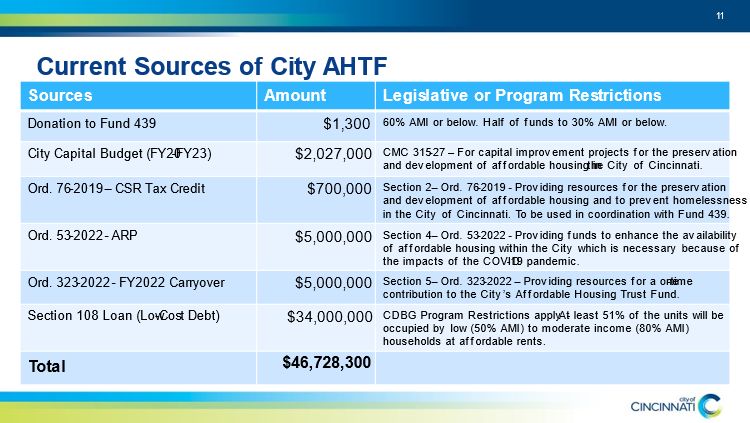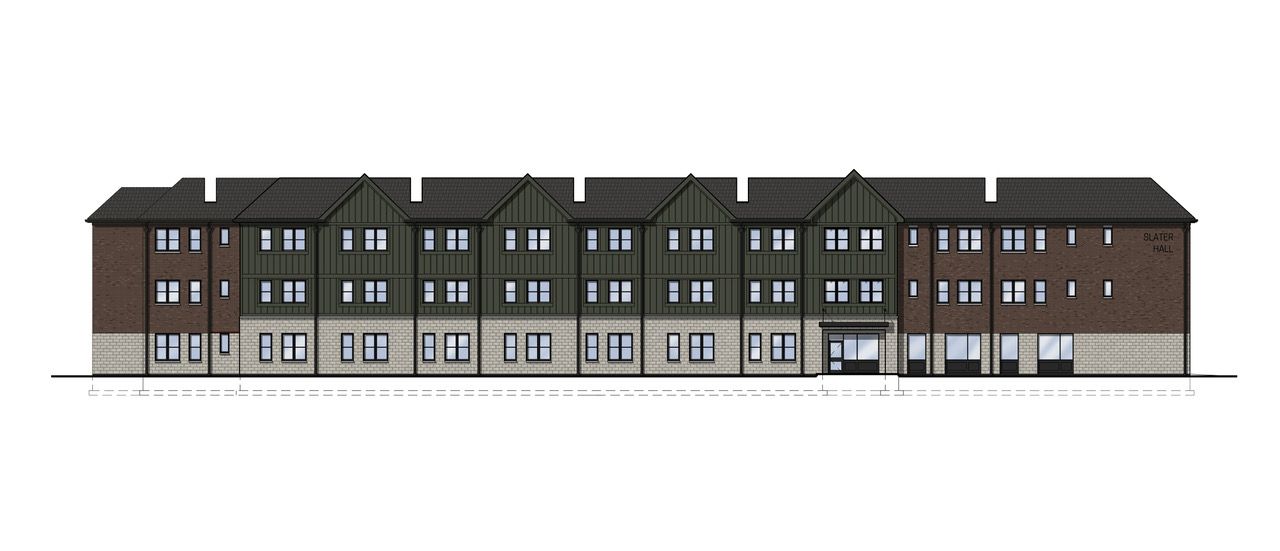CINCINNATI — Nearly four years later, the City of Cincinnati plans to use money from its Affordable Housing Trust Fund for the first time to support some of the area’s most vulnerable residents.
What You Need To Know
- The City of Cincinnati announced a $1.88 million investment in a new affordable project geared toward low-income residents with a history of mental health issues
- Slater Hall is the first investment the city made from its nearly 4-year-old Affordable Housing Trust Fund
- Cincinnati leaders have invested millions to the trust fund this year to help speed up the development of affordable housing
- Development leaders called this type of “gap financing” crucial to creating more affordable units
On Tuesday, the city announced the Slater Hall development in the West End neighborhood as the first recipient of money from the trust fund.
The project is getting $1.88 million from the Affordable Housing Trust Fund, according to Tender Mercies, a project partner. The overall price tag is nearly $11.5 million.
The money will go toward the construction of 62 units of permanent supportive housing on a vacant lot at 898 W. Court St. Each unit will be an efficiency.
Excavation and site preparation have already started. A timeline for completion isn’t yet available.
“In the Trust Fund, we’ve established a sustainable revenue source to help build and maintain housing for those who need it most, and that work is delivering results,” said Mayor Aftab Pureval. “I couldn’t be prouder that the very first project will serve our most vulnerable residents.”

An early rendering of the Slater Hall development heading to West End. (Photo courtesy of City of Cincinnati)
All the units at Slater Hall have an operating or rental subsidy so that no tenant will pay more than 30% of their income for rent, according to the city.
Russell Winters, the CEO of Tender Mercies, said being able to find quality housing at that price point is especially important for the residents who will live there.
Tender Mercies provides housing and supportive services for homeless adults who have histories of severe mental illness. Most of the residents at Slater Hall will have little to no income, and they’re all likely most have faced hurdles accessing treatment, finding employment and securing quality housing, Winters said.
“While our region still has much work to do to address our dire shortage of affordable housing, this project shows that the Affordable Housing Trust Fund can be an instrumental funding source in helping permanent supportive housing projects cross the finish line,” he added.
The city established the Affordable Housing Trust Fund in December 2018. Any money added to it must go to the development, construction, or maintenance of local affordable housing.
Affordable housing can mean many things, but most organizations use average median income (AMI) as an indicator. It often gets broken down to specific percentage ranges of AMI, typically between 30% and 80%.
Housing is affordable by most definitions when it costs less than 30% of an individual or family’s income, including rent and utilities. Beyond that, people become what’s known as “house burdened.”
Data from the American Community Survey Census shared in a 2017 report showed Hamilton County needed approximately 40,000 more affordable units to meet demand. The data came from 2010 to 2014.
But despite the creation of the trust fund, the dollars to support its mission have been scarce so far. It had received less than $3 million coming into this year.

The City of Cincinnati displayed this graphic on funding for the Affordable Housing Trust Fund. (Photo courtesy of City of Cincinnati)
The city administration wrote a report in February stating it had created or preserved 1,280 income-restricted affordable housing units over the last five years. That’s an average of 256 units per year.
Since coming into office in January, Pureval and the new City Council have sped up that pace. They’ve also capitalized on available federal pandemic recovery money.
In February, the city committed millions in Cincinnati’s American Rescue Plan Act (ARPA) allocation from fiscal year 2021 to the fund. The fund has also received $15 million in private dollars.
As of Tuesday, the city had added $44 million to the Affordable Housing Trust Fund this year.
Slater Hall is being developed as a partnership between Over-the-Rhine Community Housing and Tender Mercies. Both have a long history of working with Cincinnati Development Fund (CDF), which administers the Affordable Housing Trust Fund. CDF provides early stage loan capital and patient construction debt to these types of projects.
Kristen Baker, executive director of LISC Greater Cincinnati, said projects like Slater Hall rely on nontraditional funding sources.
Typically, housing projects require loans from banks or other for-profit lending institutions. In most cases, that funding comes with an expectation that units will go for market rate to ensure the borrower can repay the loan.
That mindset can make finding money for affordable housing a challenge, Baker said. Affordable units likely won’t make back that money for many years.
That’s why gap financing—funding such as the city’s trust fund to cover the cost of projects not funded through private lending—is a “crucial” part of the process, Baker said.
The city also uses its Notice of Funding Availability (NOFA) program and tax incentives to create affordable housing.
“As construction costs continue to increase, developers creating housing products at varying income levels find themselves in a challenging position,” Baker said. “When rental revenue cannot cover construction and ongoing property management costs for housing priced appropriately for those making incomes below poverty, filling that financing gap is critical. The most flexible source of funds in that gap are those that do not need to be repaid, which is the critical role of public funding sources like the housing trust fund.”
Council member Reggie Harris, chair of the Equitable Growth and Housing Committee, called the Slater Hall project a “perfect example” of how partners can work together to create quality housing for those in greatest need.
“This sends the message to [affordable housing developers] that if you come to Cincinnati with a good project, we will support you with the resources you need to get it done,” he said.




